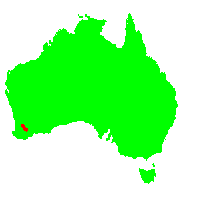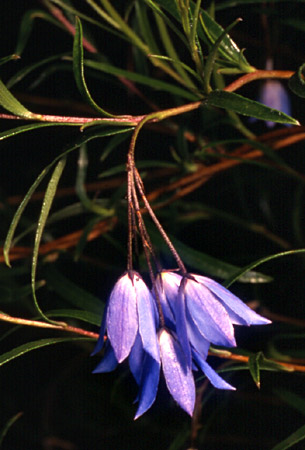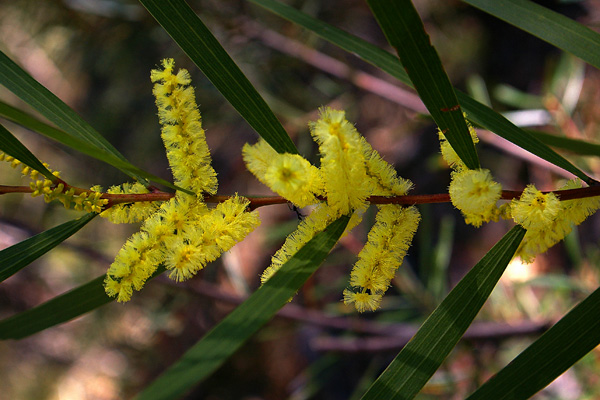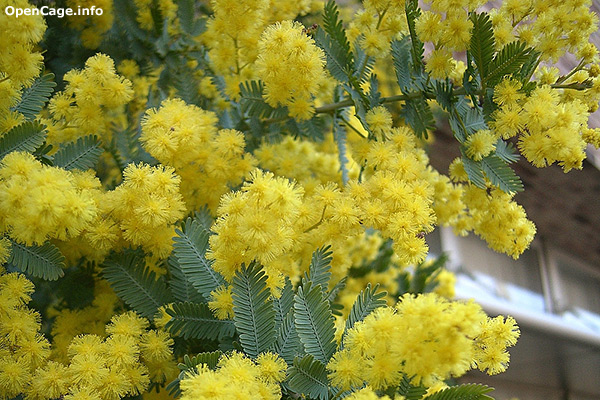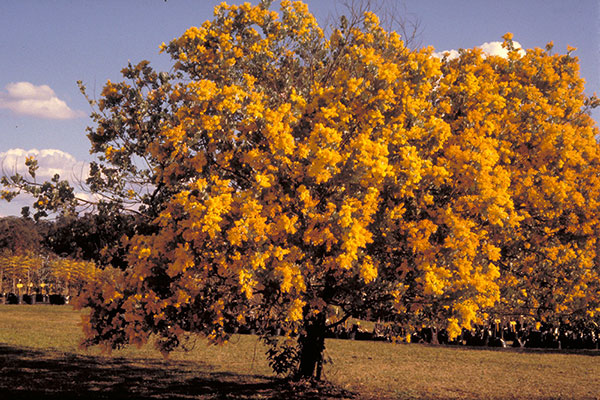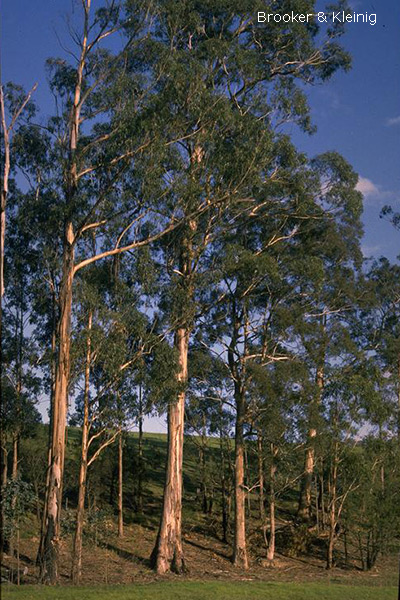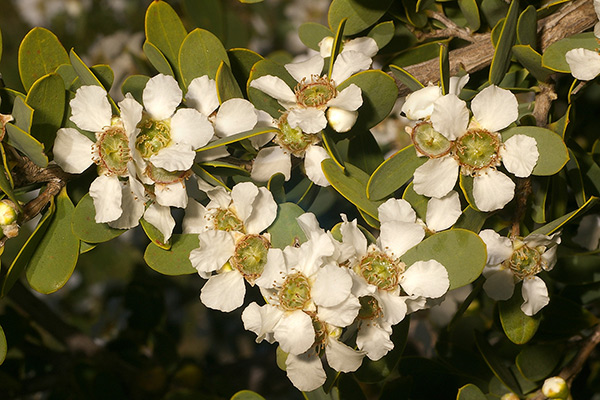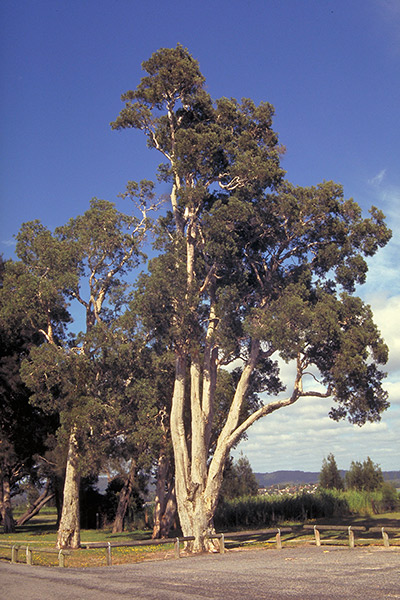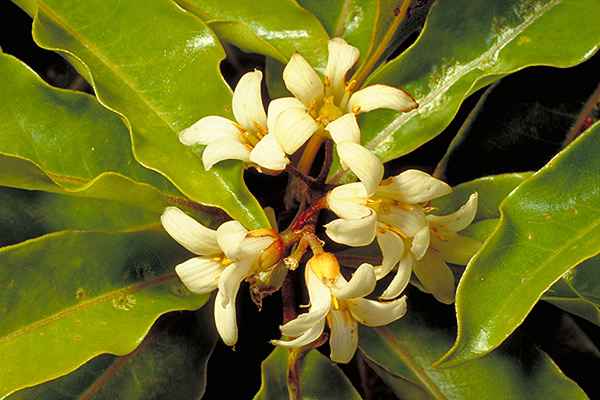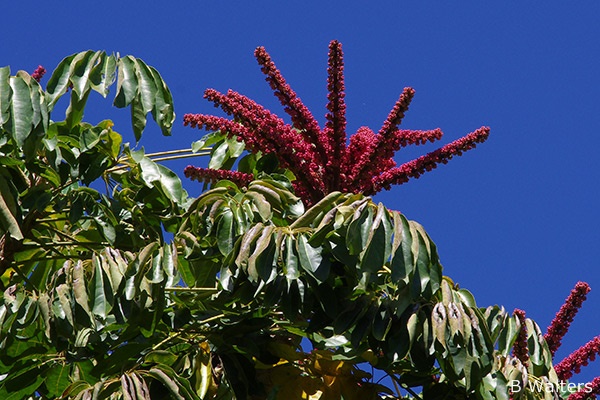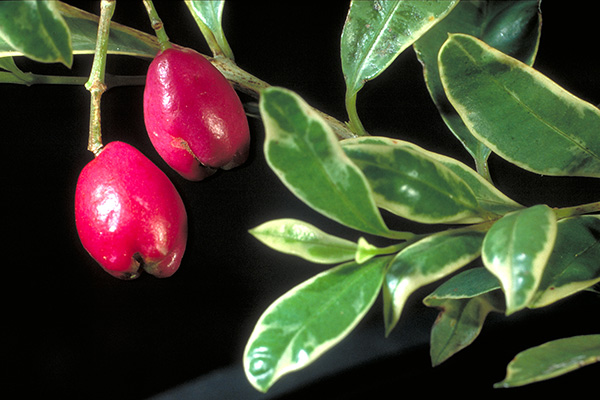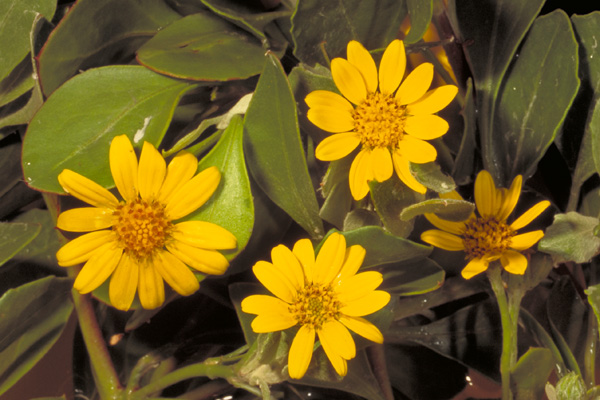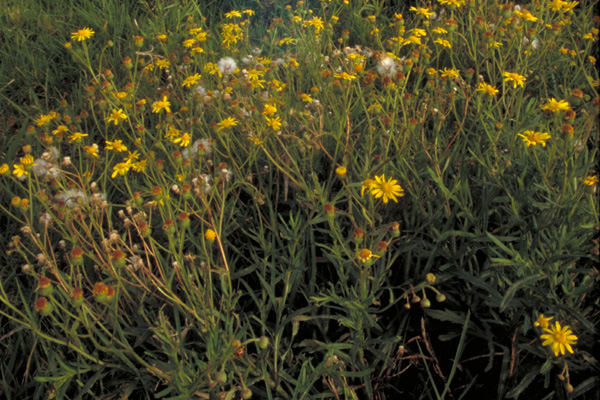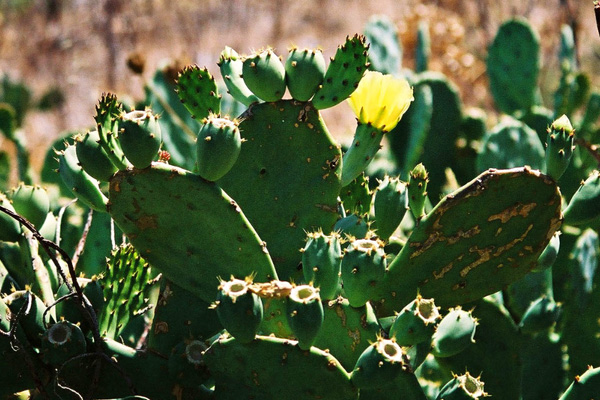General Description:
The genus Gastrolobium consists of over 100 species*, all but two of which are found only in Western Australia. Recent botanical revision has seen all members of the genus Brachysema transferred to Gastrolobium. They are generally small shrubs ranging from prostrate in habit to about 2 metres. Many species of Gastrolobium are known to be poisonous and some have been associated with stock poisoning. Because of this, few gastrolobiums are cultivated, the exceptions being a number of species previously in Brachysema.
Gastrolobium stipulare was formerly known as Nemcia stipularis. It is an erect, leafy shrub to about 0.5 metres high. The leaves are linear in shape to about 20 mm long and often curved. The pea-type flowers are yellow with a reddish-brown centre. Flowering occurs in spring. The toxicity of this species is not known.
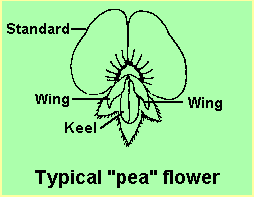
The typical “pea” flowers consist of 4 petals; the “standard”, the “keel” and two “wings”, as shown in the diagram.
G. stipulare is not known to be cultivated to any great extent. It is an attractive shrub with massed, conspicuous flowers and would probably grow successfully in well drained soils in full sun to semi-shade. However, as its toxicity is not known, caution should be exercised in cultivating the species.
Propagation is easy from seed following pre-treatment to break the physical dormancy provided by the impervious seed coat. Pre-treatment can be carried out by abrasion or by the use of boiling water (further details can be found in under the “Propagation” tab of the “Pea Family” page). The seed retains viability for many years. Cuttings strike well using firm, current season’s growth.
* Chandler G T, Crisp M D, Cayzer L W and Bayer R J (2002), Monograph of Gastrolobium (Fabaceae: Mirbelieae). Australian Systematic Botany 15 (619-739).
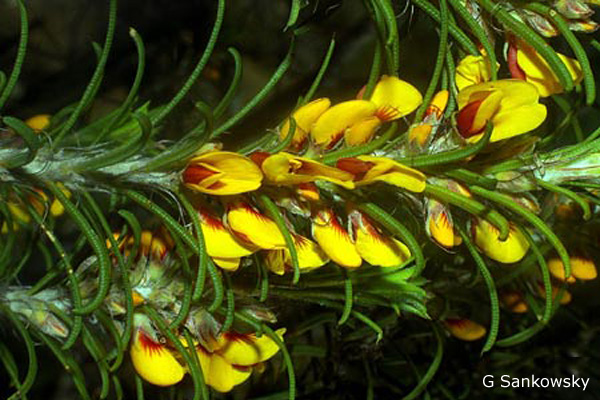
Gastrolobium stipulare
Photo: Garry Sankowsky
 Australian Native Plants Society (Australia)
Australian Native Plants Society (Australia)